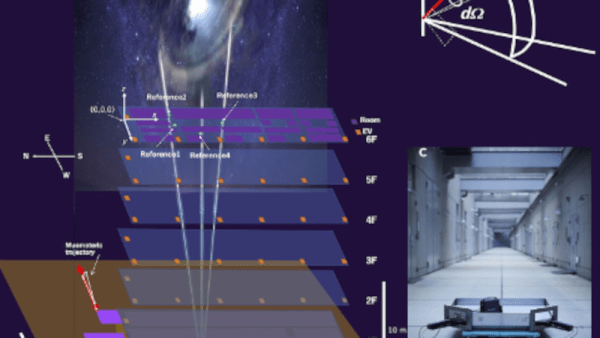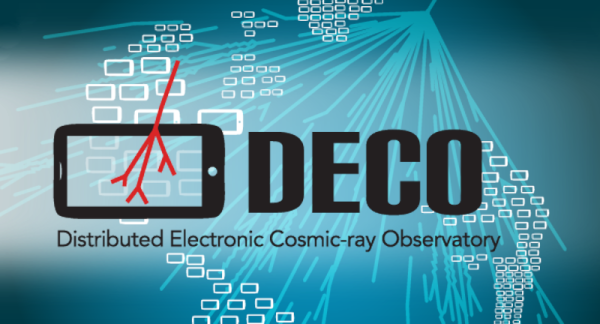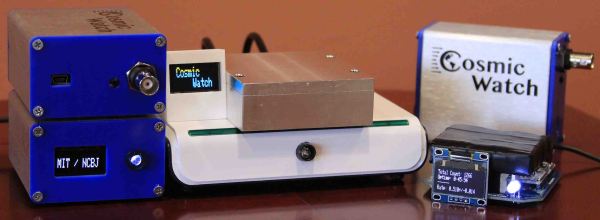A little over a year ago we’d written about a sub $100 muon detector that MIT doctoral candidate [Spencer Axani] and a few others had put together. At the time there was little more than a paper on arxiv.org about it. Now, a few versions later they’ve refined it to the level of a kit with full instructions for making your own under the banner, CosmicWatch including PCB Gerber files for the two surface mount boards you’ll need to assemble.
What’s a muon? The Earth is under constant bombardment from cosmic rays, most of them being nuclei expelled from supernova explosions. As they collide with nuclei in our atmosphere, pions and kaons are produced, and the pions then decay into muons. These muons are similar to electrons, having a +1 or -1 charge, but with 200 times the mass.
This pion-to-muon decay happens higher than 10 km above the Earth’s surface. But the muons have a lifetime at rest of 2.2 μs. This means that the number of muons peak at around 10 km and decrease as you go down. A jetliner at 30,000 feet will encounter far more muons than will someone at the Earth’s surface where there’s one per cm2 per minute, and the deeper underground you go the fewer still. This makes them useful for inferring altitude and depth.

Muon detector

How it works
How does CosmicWatch detect these muons? The working components of the detector consist of a plastic scintillator, a silicon photomultiplier (SiPM), a main circuit board which does signal amplification and peak detection among other things, and an Arduino nano.
As a muon passes through the scintillating material, some of its energy is absorbed and re-emitted as photons. Those photons are detected by the silicon photomultiplier (SiPM) which then outputs an electrical signal that is approximately 0.5 μs wide and 10-100 mV. That’s then amplified by a factor of 6. However, the amplified pulse is too brief for the Arduino nano and so it’s stretched out by the peak detector to roughly 100 μs. The Arduino samples the peak detector’s output and calculates the original pulse’s amplitude.
Their webpage has copious details on where to get the parts, the software and how to make it. However, they do assume you can either find a cheap photomultiplier somewhere or buy it in quantities of over 100 brand new, presumably as part of a school program. That bulk purchase makes the difference between a $50 part and one just over $100. But being skilled hackers we’re sure you can find other ways to save costs, and $150 for a muon detector still isn’t too unreasonable.
Detecting muons seems to have become a thing lately. Not too long ago we reported on a Hackaday prize entry for a detector that uses Russian Geiger–Müller Tubes.




















